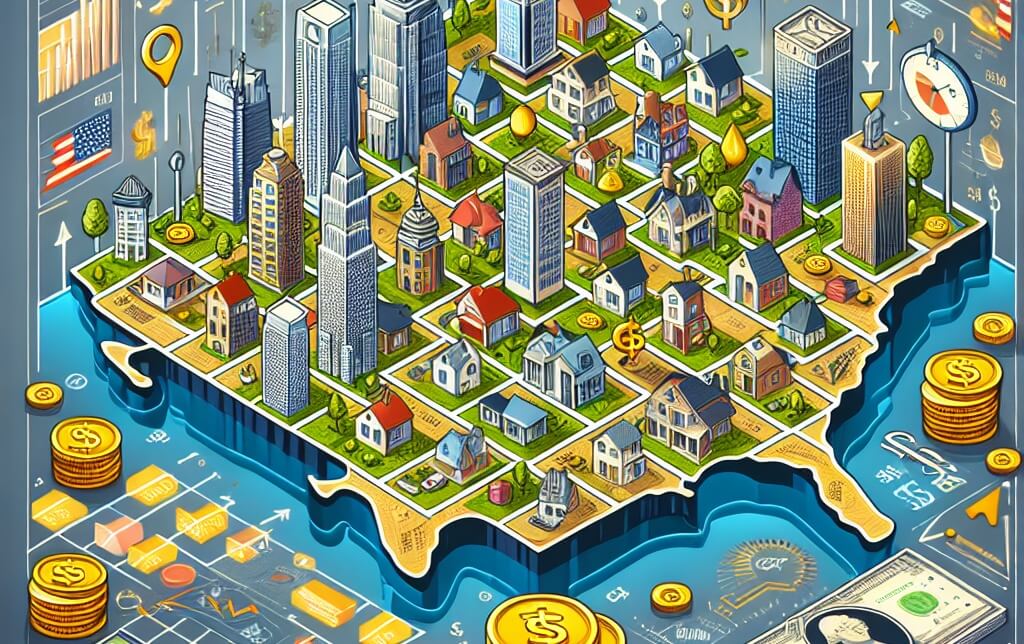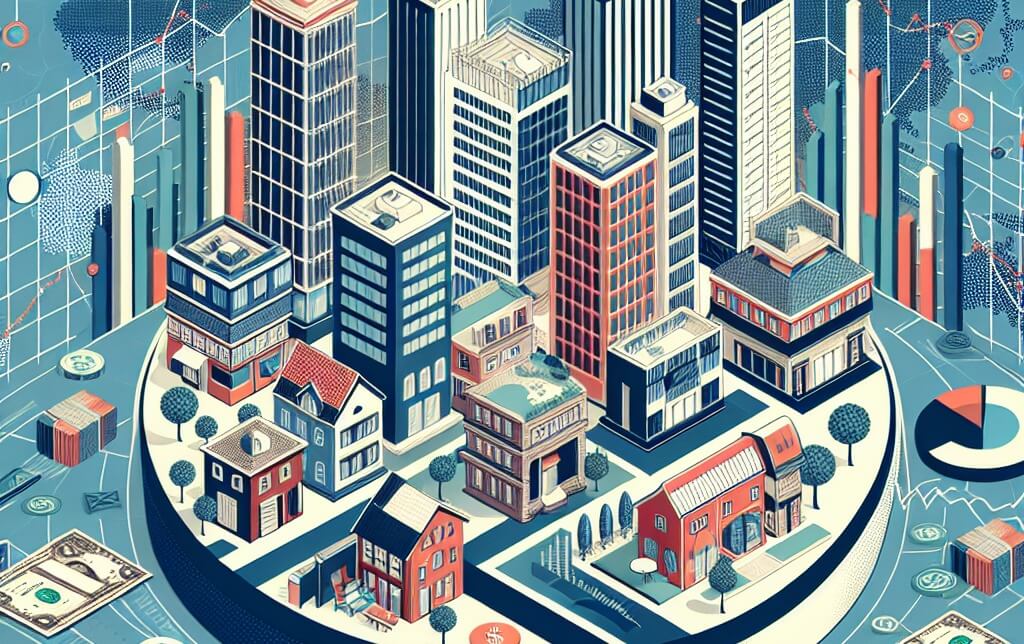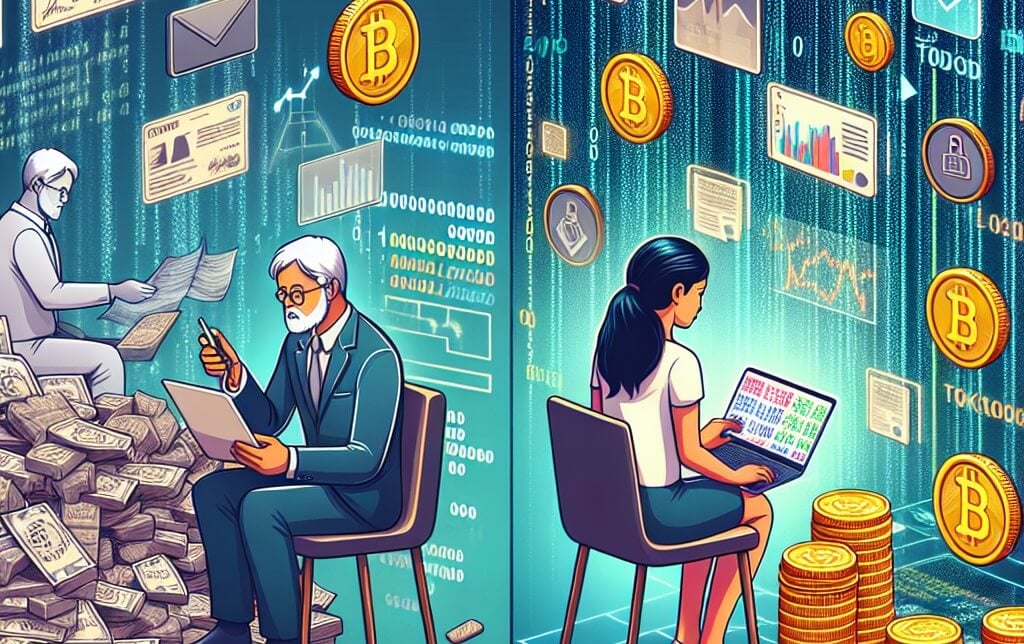
Outline: Non Fungibility
Non-fungibility refers to the property of a unique asset or item that cannot be exchanged or substituted on a one-to-one basis with another asset of the same type. In the realm of digital assets, non-fungibility is often associated with non-fungible tokens (NFTs), which are unique cryptographic tokens that represent ownership of a specific digital asset. Unlike cryptocurrencies such as Bitcoin, which are fungible and can be exchanged on a like-for-like basis, NFTs are indivisible and cannot be replicated, making them distinct and irreplaceable. The concept of non-fungibility has gained significant attention in recent years, particularly in the art and collectibles space, where NFTs have enabled creators to tokenize and sell digital artwork and other unique assets, thereby establishing provenance and ownership in a digital environment.
I. Introduction to Non Fungibility
Introduction to Non-Fungibility Non-fungibility represents a fundamental concept within the realm of digital assets and cryptocurrencies, distinguishing itself from fungible assets by its unique and indivisible nature. In essence, non-fungible tokens (NFTs) are cryptographic assets that are not interchangeable on a one-to-one basis, as each token holds distinct characteristics and properties that set it apart from others within the same network. This inherent uniqueness grants NFTs unparalleled value and authenticity, opening up a wide array of possibilities for applications ranging from digital art and collectibles to real estate and intellectual property rights. As the landscape of blockchain technology continues to evolve, the concept of non-fungibility stands at the forefront of innovation, reshaping traditional notions of ownership and value in the digital age.
- Definition of non fungibility
Non-fungibility refers to the unique and distinct properties of an asset or item that make it non-interchangeable with other similar assets. In the context of blockchain technology and cryptocurrencies, non-fungibility is often associated with non-fungible tokens (NFTs), which are digital assets that are indivisible and cannot be replicated or exchanged on a one-to-one basis. Each NFT has its own distinct value and characteristics, making it unique and irreplaceable. This concept of non-fungibility is essential for establishing ownership and authenticity in the digital realm, allowing for the creation and trading of one-of-a-kind digital assets.
- Differentiating non fungible assets from fungible assets
Non-fungible assets are unique and indivisible assets that cannot be exchanged on a one-to-one basis with other assets due to their distinct characteristics or properties. These assets hold specific value based on their individuality, such as artwork, collectibles, or real estate. In contrast, fungible assets are interchangeable and identical to each other, allowing for a direct exchange with assets of the same type or value. Examples of fungible assets include currencies, commodities, or cryptocurrencies. The key differentiation between non-fungible and fungible assets lies in the uniqueness and irreplaceability of the former, while the latter can be easily exchanged without any loss of value due to their uniformity.
- Importance and implications of non fungibility
The importance of non-fungibility lies in its ability to confer uniqueness and exclusivity to digital assets, preventing them from being easily interchangeable with other tokens or assets. This characteristic is particularly valuable in the realm of digital collectibles, where authenticity and scarcity are paramount. Non-fungibility ensures the provenance and ownership of each individual asset, thereby enhancing its value and desirability among collectors. Furthermore, the implications of non-fungibility extend to areas such as tokenization of real-world assets, intellectual property rights, and secure transactions. By safeguarding the distinctiveness and irreplaceability of digital assets, non-fungibility paves the way for new possibilities in the digital economy, offering enhanced security and value for participants in various industries.
II. Characteristics and Properties of Non Fungible Assets
Non-fungible assets possess unique characteristics and properties that distinguish them from fungible assets. One key trait of non-fungible assets is their indivisibility, meaning they cannot be exchanged on a one-to-one basis with other assets due to their distinct qualities. These assets also exhibit scarcity, as each item is one-of-a-kind or limited in quantity, enhancing their value and desirability among collectors and investors. Additionally, non-fungible assets are often characterized by their authenticity and provenance, with a transparent and immutable record of ownership that ensures their uniqueness and origin can be verified. Overall, the characteristics and properties of non-fungible assets contribute to their appeal as valuable and irreplaceable assets in the digital and physical realms.
- Uniqueness and individuality of non fungible assets
The uniqueness and individuality of non-fungible assets stem from their inherent characteristics that set them apart from interchangeable goods. These assets, such as digital art, collectibles, and virtual real estate, are distinguished by their singular nature, ensuring that each item is one-of-a-kind and cannot be replicated or exchanged on a like-for-like basis. This exclusivity is enforced through blockchain technology, which provides a secure and transparent record of ownership, guaranteeing the authenticity and scarcity of each non-fungible asset. As a result, these assets hold intrinsic value based on their distinct features, rarity, and provenance, making them highly sought after by collectors and investors seeking to own a piece of unique digital history.
- Inability to be exchanged on a one-to-one basis
Non-fungibility refers to the inability of an asset to be exchanged on a one-to-one basis with another asset due to its unique properties or characteristics. In the realm of non-fungible tokens (NFTs), each token holds distinct attributes that differentiate it from others, making them irreplaceable and indivisible. This lack of interchangeability adds value to NFTs, as they represent ownership of a specific digital asset that cannot be replicated or substituted. The non-fungible nature of these tokens enhances their scarcity and authenticity, contributing to their appeal and potential investment value in the digital market.
- Non interchangeable nature of non fungible assets
The non-interchangeable nature of non-fungible assets stems from their unique characteristics and individualized properties. Unlike fungible assets, which are mutually interchangeable based on their value, non-fungible assets possess distinct qualities that set them apart from one another. This non-interchangeability is often attributed to the inherent scarcity, authenticity, and specific attributes that define each non-fungible asset. As a result, the value and desirability of non-fungible assets are intricately tied to their individuality and exclusivity, making them inherently unique and irreplaceable in the marketplace.
- Examples of non fungible assets (e.g., digital collectibles, fine art, real estate)
Non-fungible assets are unique and distinct items that cannot be exchanged on a one-to-one basis with other assets due to their individual characteristics. Examples of non-fungible assets include digital collectibles, such as CryptoKitties or NBA Top Shot moments, which are unique digital assets stored on the blockchain. Fine art pieces, like paintings or sculptures, are also non-fungible assets as each piece is one-of-a-kind and holds intrinsic value based on its artistic merit and historical significance. Real estate properties are another example of non-fungible assets, as each property has unique features, locations, and potential uses that differentiate it from other properties. These assets cannot be easily replaced or replicated, making them valuable and distinct within the market.
III. Non Fungibility in the Context of Blockchain Technology
Non-fungibility in the context of blockchain technology refers to the unique and distinct nature of digital assets that cannot be exchanged on a one-to-one basis with other assets. This characteristic is crucial in establishing ownership and authenticity in a decentralized environment. Non-fungible tokens (NFTs) are a prominent example of non-fungible assets on the blockchain, representing ownership of digital art, collectibles, and other unique items. The non-interchangeable nature of NFTs ensures their scarcity and individual value, making them highly sought after in the digital marketplace. Non-fungibility enhances the security and value proposition of blockchain technology by enabling the verification and transfer of unique assets with a high degree of transparency and immutability.
- Overview of blockchain technology
Blockchain technology is a decentralized, distributed ledger system that enables secure and transparent transactions without the need for intermediaries. It operates on a network of interconnected nodes that collectively validate and record transactions in a chronological chain of blocks. Each block contains a cryptographic hash of the previous block, ensuring the integrity and immutability of the data. One of the key features of blockchain technology is its ability to create non-fungible tokens (NFTs), which are unique digital assets that cannot be replicated or exchanged on a one-to-one basis. This non-fungibility aspect has revolutionized the way digital assets are bought, sold, and owned, opening up new possibilities for creators and collectors alike.
- Role of non fungible tokens (NFTs) in representing non fungible assets on the blockchain
Non-fungible tokens (NFTs) play a crucial role in representing non-fungible assets on the blockchain by providing a unique digital representation of individual assets that cannot be replicated or exchanged on a one-to-one basis. Unlike fungible tokens such as cryptocurrencies, NFTs are indivisible and possess distinct attributes that differentiate them from one another. This enables the secure and transparent tracking of ownership and provenance of non-fungible assets, such as digital art, collectibles, and virtual real estate, on the blockchain. NFTs utilize smart contracts to establish ownership rights, ensuring that each asset is one-of-a-kind and cannot be duplicated, fostering a new paradigm for digital ownership and asset management in a decentralized environment.
- Use of smart contracts to enforce ownership and transfer of NFTs
The use of smart contracts to enforce ownership and transfer of Non-Fungible Tokens (NFTs) presents a pivotal advancement in the realm of digital asset management. Leveraging blockchain technology, smart contracts facilitate the secure and immutable transfer of NFTs by encoding ownership rights and conditions directly into the token itself. This innovative approach eliminates the need for intermediaries, streamlines transactions, and ensures the authenticity and uniqueness of each NFT. By automating the verification and execution of ownership transfers, smart contracts enhance the trust and efficiency of NFT transactions, thus solidifying the integrity of non-fungible assets in the digital space.
- Advantages and limitations of using blockchain for non fungible assets
Blockchain technology offers several advantages when it comes to managing non-fungible assets. One of the key benefits is the immutability of the blockchain, which ensures that ownership records cannot be altered or tampered with, providing a high level of security and transparency. Additionally, the decentralized nature of blockchain eliminates the need for intermediaries, reducing costs and increasing efficiency in asset transfers. However, there are limitations to using blockchain for non-fungible assets. The scalability of blockchain networks can be a challenge when dealing with a large number of unique assets, leading to potential congestion and slower transaction speeds. Additionally, the permanence of blockchain can be a double-edged sword, as it may be difficult to rectify errors or disputes once data is recorded on the blockchain. Overall, while blockchain technology offers significant advantages for managing non-fungible assets, careful consideration of its limitations is essential for effective implementation.
IV. Use Cases and Applications of Non Fungible Assets
IV. Use Cases and Applications of Non Fungible Assets Non-fungible assets have garnered significant attention due to their unique characteristics and applications across various industries. One prominent use case of non-fungible assets is in the realm of digital art, where artists can create and sell one-of-a-kind pieces using blockchain technology to establish provenance and ownership. Additionally, non-fungible tokens (NFTs) have been utilized in the gaming industry to represent in-game assets, allowing players to own and trade exclusive items. Beyond art and gaming, non-fungible assets have also found applications in real estate, ticketing, and intellectual property protection. The non-interchangeable nature of these assets provides a secure and transparent way to authenticate ownership, paving the way for innovative business models and new opportunities for creators and collectors alike.
- NFT marketplaces and their role in buying and selling non fungible assets
NFT marketplaces play a crucial role in facilitating the buying and selling of non-fungible assets, offering a platform for creators and collectors to engage in transactions involving unique digital items. These marketplaces provide a structured environment for individuals to showcase, list, and acquire NFTs, which are distinguishable from one another due to their one-of-a-kind characteristics. Through the use of blockchain technology, NFT marketplaces ensure the authenticity and ownership of these assets, allowing for secure and transparent transactions to take place. Additionally, these platforms enable a global audience to participate in the NFT market, fostering a vibrant ecosystem for the exchange of digital art, collectibles, and other unique creations.
- Examples of popular non fungible assets (e.g., digital art, baseball cards, video game items)
Non-fungible assets encompass a wide array of items that hold unique value due to their distinctiveness and scarcity. Examples of popular non-fungible assets include digital art, which are one-of-a-kind pieces created and authenticated using blockchain technology, ensuring their rarity and provenance. Another prominent category is baseball cards, where each card is individually valued based on factors like player, condition, and historical significance. Video game items, such as in-game skins or virtual real estate, are also notable non-fungible assets that have gained traction in the digital age. These assets cannot be exchanged on a one-to-one basis due to their uniqueness, making them highly coveted by collectors and enthusiasts.
- Potential for non fungible assets in various industries (e.g., art, gaming, real estate)
The potential for non-fungible assets across various industries, such as art, gaming, and real estate, signifies a paradigm shift in the way value is perceived and exchanged. Non-fungible assets, by their very nature, possess unique characteristics that differentiate them from interchangeable goods. In the art world, non-fungible tokens (NFTs) have revolutionized ownership and provenance, allowing artists to tokenize their work and establish verifiable authenticity. Similarly, the gaming industry has embraced NFTs as a means of creating rare in-game items that can be bought, sold, and traded securely. Real estate, too, stands to benefit from the tokenization of properties, enabling fractional ownership and increased liquidity in an otherwise illiquid market. The potential for non-fungible assets to disrupt traditional industries and unlock new opportunities for value creation is substantial, highlighting the transformative power of blockchain technology and digital ownership.
- Exploring the unique value proposition of non fungible assets
Non-fungible assets present a distinctive value proposition in the realm of digital ownership and unique collectibles. Unlike traditional fungible assets, such as cryptocurrencies or stocks, non-fungible assets are indivisible and unique, each possessing its own distinct characteristics and value. This exclusivity and irreplaceability make non-fungible assets highly sought after by collectors, enthusiasts, and investors alike. The intrinsic value of non-fungible assets lies in their scarcity, authenticity, and the ability to provide verifiable ownership of digital assets in a decentralized and transparent manner. Furthermore, the immutability of blockchain technology ensures the integrity and provenance of these assets, enhancing their value proposition by guaranteeing their authenticity and uniqueness. In essence, the unique value proposition of non-fungible assets lies in their ability to offer digital ownership of one-of-a-kind items, fostering a new era of digital collectibles and asset ownership.
V. Economic and Financial Implications of Non Fungibility
The economic and financial implications of non-fungibility are significant and multifaceted. Non-fungibility refers to assets or goods that are unique and cannot be replaced by an identical counterpart. In the realm of economics, non-fungible assets can lead to increased valuation due to their scarcity and individuality, potentially creating a market for niche collectors or investors. However, the lack of interchangeability can also pose challenges in terms of liquidity and marketability, as non-fungible assets may be harder to buy, sell, or trade compared to fungible assets. Financially, the valuation of non-fungible assets can be subjective and volatile, as their worth is often determined by factors such as perceived value, historical significance, and market demand. Overall, the presence of non-fungible assets introduces a unique dynamic to economic and financial landscapes, requiring careful consideration and analysis to navigate effectively.
- Understanding the demand for non fungible assets
Understanding the demand for non-fungible assets requires a nuanced examination of the evolving landscape of digital ownership and the increasing desire for unique and exclusive digital goods. Non-fungible assets, by their very nature, represent one-of-a-kind items that cannot be replicated or interchanged, thus holding significant value in a digital economy where authenticity and scarcity are highly prized. The appeal of non-fungible assets lies in their ability to confer ownership and provenance in a digital realm where traditional notions of ownership are being redefined. As individuals seek to express their identity and status through digital possessions, the demand for non-fungible assets is driven by a desire for individuality, exclusivity, and the intrinsic value associated with owning a truly unique digital asset.
- Impact on the value and pricing of non fungible assets
The concept of non-fungibility in assets has a significant impact on their value and pricing. Non-fungible assets, by virtue of their unique and indivisible nature, often command higher value compared to fungible assets due to their scarcity and exclusivity. The pricing of non-fungible assets is influenced by various factors such as the rarity, demand, provenance, and perceived cultural or historical significance. Additionally, the emergence of blockchain technology and the ability to authenticate ownership and provenance has further bolstered the value of non-fungible assets in the digital realm. As a result, the market for non-fungible assets has experienced a surge in interest and investment, leading to fluctuating prices and a growing recognition of their value as collectibles, investments, and cultural artifacts.
- Comparing non fungible assets to traditional fungible assets (e.g., dollar bills, cryptocurrencies)
Non-fungible assets, such as digital art, collectibles, and real estate, possess unique characteristics that differentiate them from traditional fungible assets like dollar bills and cryptocurrencies. Unlike fungible assets that are interchangeable and hold the same value, non-fungible assets are distinct and indivisible, making each one unique and irreplaceable. While fungible assets can be exchanged on a one-to-one basis without any loss of value, the value of non-fungible assets is subjective and often determined by factors such as scarcity, demand, and provenance. Additionally, non-fungible assets are often considered more illiquid than fungible assets, as their uniqueness can make them challenging to sell or trade quickly. Despite these differences, both types of assets play important roles in the financial ecosystem, offering investors diverse options for diversification and wealth preservation.
- Exploring the potential for non fungible assets as investment opportunities
Non-fungible assets, such as digital art, collectibles, and virtual real estate, have garnered increasing attention as potential investment opportunities in recent years. Unlike fungible assets like stocks or cryptocurrencies, non-fungible assets are unique and indivisible, making them attractive to collectors and investors seeking exclusivity and scarcity. The rise of blockchain technology has facilitated the creation and trading of these assets, providing a transparent and secure platform for ownership and verification. As the market for non-fungible assets continues to expand, investors are exploring the potential for diversification and long-term growth by allocating a portion of their portfolios to these unique and increasingly popular assets.
VI. Challenges and Future Directions of Non Fungibility
One of the key challenges facing the concept of non-fungibility is the issue of interoperability. As non-fungible tokens (NFTs) continue to gain popularity across various industries, the lack of standardization and compatibility between different platforms and blockchains poses a significant hurdle to their widespread adoption. Additionally, concerns surrounding the provenance and authenticity of NFTs raise questions about their long-term value and legitimacy. Moving forward, addressing these challenges will require collaboration among industry stakeholders to establish common standards and protocols that enhance the transparency and trustworthiness of non-fungible assets. Moreover, exploring innovative solutions such as decentralized identity verification and smart contract technologies can help mitigate some of the current limitations and shape the future development of non-fungibility in a more secure and efficient manner.
- Scalability and sustainability concerns in the NFT space
Scalability and sustainability concerns within the realm of non-fungible tokens (NFTs) are paramount issues that warrant careful consideration. The exponential growth and popularity of NFTs have raised questions regarding the ability of existing blockchain networks to handle the increasing demand for transactions. The current limitations in scalability could potentially hinder the widespread adoption of NFTs and create bottlenecks in the system. Moreover, the environmental impact of NFTs, particularly in terms of energy consumption, is a pressing concern. The resource-intensive nature of blockchain technology used in NFTs has prompted discussions on the sustainability of this burgeoning market. Efforts to address these challenges are crucial to ensure the long-term viability and success of the NFT space.
- Legal and regulatory considerations surrounding non fungible assets
Legal and regulatory considerations surrounding non-fungible assets are of paramount importance in the rapidly evolving digital landscape. Non-fungible assets, characterized by their unique and indivisible nature, present unique challenges in terms of ownership, intellectual property rights, and taxation. From a legal perspective, determining the ownership and transferability of non-fungible assets requires clear and enforceable contracts to avoid disputes. Additionally, intellectual property laws play a crucial role in protecting the creators of non-fungible assets from infringement and unauthorized use. Furthermore, tax implications related to the sale and ownership of non-fungible assets need to be carefully evaluated to ensure compliance with relevant regulations. As the market for non-fungible assets continues to grow, it is imperative for legislators and regulatory bodies to adapt and provide clear guidelines to address the legal complexities surrounding these digital assets.
- Potential for innovation and growth in the non fungible asset market
The potential for innovation and growth in the non-fungible asset market is significant due to the unique nature of these assets. Non-fungible assets, by their very definition, are one-of-a-kind and cannot be replaced or exchanged on a like-for-like basis. This inherent scarcity opens up opportunities for creativity and value creation, as each asset holds its own distinct value based on its individual characteristics. As technology continues to advance, the ability to tokenize and trade these assets on blockchain platforms provides a secure and transparent way to establish ownership and facilitate transactions. This innovative approach not only expands the possibilities for digital ownership and collectibles but also introduces new avenues for investment and economic growth within the digital economy. The non-fungible asset market is poised for further development and diversification, offering a fertile ground for exploration and expansion in the realm of digital assets.
- Predictions and trends for the future of non fungibility
Predictions and trends for the future of non-fungibility suggest a continued growth and diversification of applications across various industries. As the concept of non-fungible tokens (NFTs) gains wider acceptance and understanding, we can anticipate an expansion beyond the realm of digital art and collectibles. Industries such as real estate, intellectual property rights, and even identity verification are likely to explore the potential of NFTs to represent unique and irreplaceable assets. Additionally, advancements in blockchain technology and smart contracts are expected to enhance the security and functionality of non-fungible tokens, further solidifying their position as a valuable tool for establishing ownership and authenticity in a digital world. Overall, the future of non-fungibility appears to be promising, with increasing adoption and innovative applications on the horizon.
VII. Conclusion
In conclusion, the concept of non-fungibility plays a crucial role in the realm of digital assets and cryptocurrencies. The unique and distinct properties of non-fungible tokens (NFTs) provide a level of authenticity and scarcity that sets them apart from fungible tokens. This differentiation allows for the creation of digital assets that have inherent value due to their exclusivity and individuality. As the market for NFTs continues to grow and evolve, it is evident that non-fungibility will remain a key factor in determining the value and appeal of these digital assets. Additionally, the concept of non-fungibility opens up new possibilities for creators and collectors alike, paving the way for innovative applications in various industries.
- Recap of the key points discussed
Throughout our discussion on non-fungibility, we delved into the concept of unique and indivisible assets in the digital realm. We explored how non-fungible tokens (NFTs) are revolutionizing ownership and provenance by providing a secure and transparent way to authenticate digital assets. Additionally, we highlighted the significance of blockchain technology in ensuring the scarcity and authenticity of NFTs. Furthermore, we examined the various applications of NFTs in art, gaming, collectibles, and intellectual property rights. It is evident that non-fungibility is reshaping the way we perceive and interact with digital assets, opening up new avenues for creativity, ownership, and value exchange.
- Final thoughts on the significance of non fungibility
In conclusion, the significance of non-fungibility cannot be overstated in the realm of digital assets and decentralized technologies. The concept of non-fungibility provides a unique and irreplaceable value to individual assets, allowing for ownership and provenance to be securely established in a digital environment. This characteristic has profound implications for various industries, including art, collectibles, and intellectual property, where authenticity and uniqueness hold paramount importance. By embracing non-fungibility, we are witnessing a shift towards a more secure, transparent, and efficient system of asset ownership and transfer in the digital age. As this concept continues to evolve and gain traction, it is imperative for individuals and businesses to recognize and leverage the advantages it offers in terms of establishing trust, value, and uniqueness in a rapidly advancing digital landscape.








